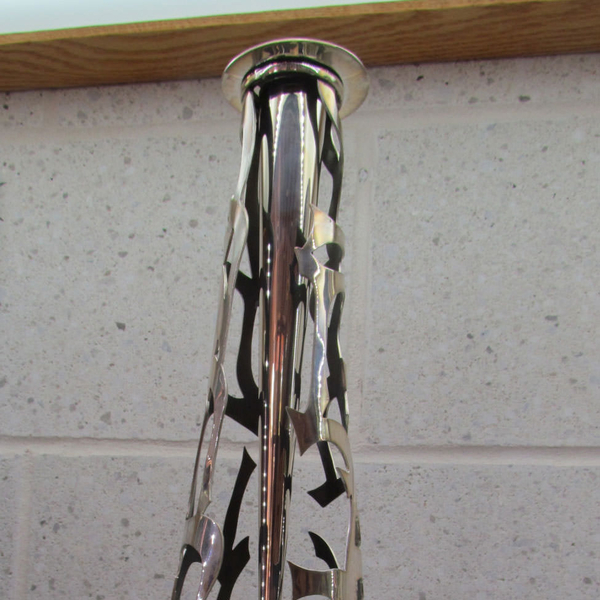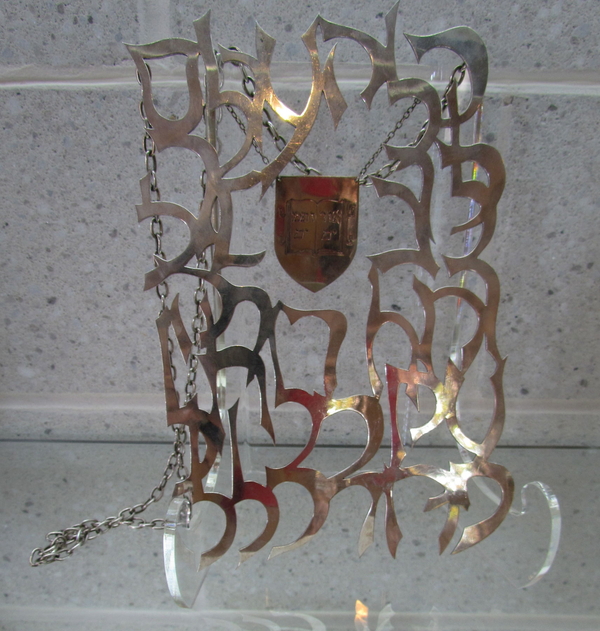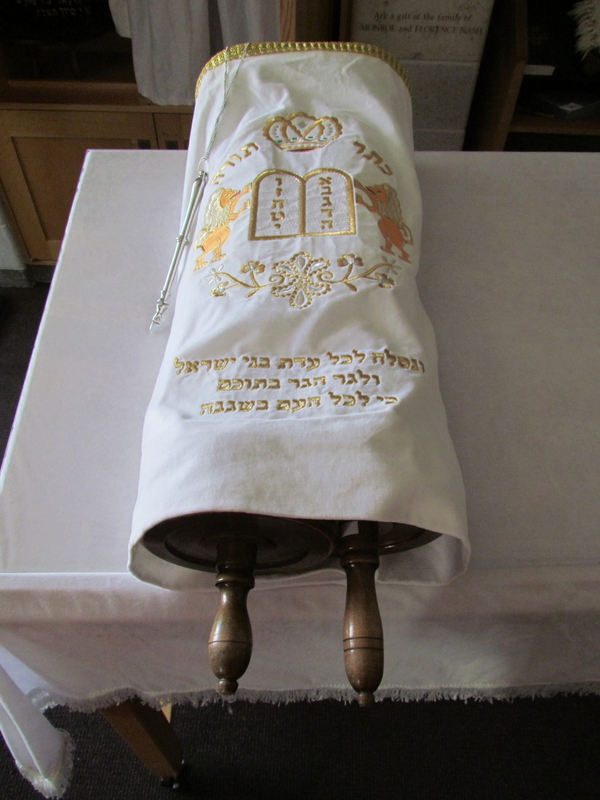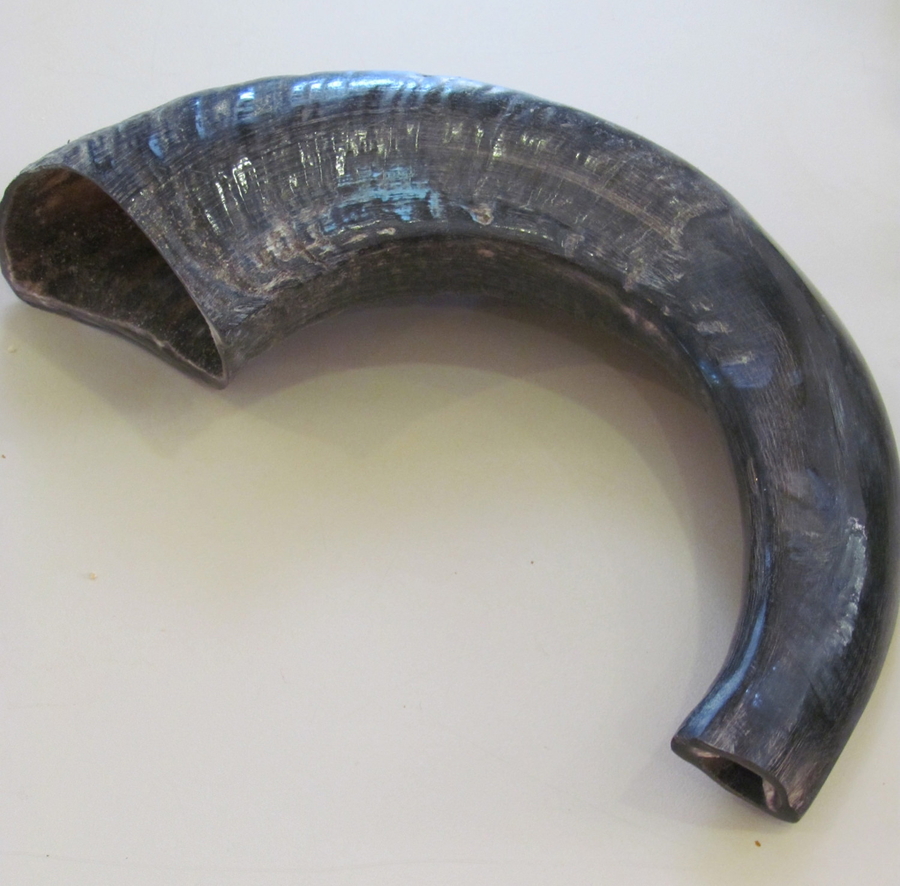Ashley Makar is the Outreach Coordinator for IRIS--Integrated Refugee & Immigrant Services, in New Haven, CT. She's been working to engage faith communities in refugee resettlement since completing her Masters in Divinity at Yale in 2013. She is a former MAVCOR fellow and graduate student in Religion and the Arts at the Yale Institute of Sacred Music (ISM). Makar is also a writer, with essays in The Washington Post, Tablet, and Killing the Buddha.

Rabbi Jordie Gerson currently works as the Assistant Director and Campus Rabbi at University of Vermont Hillel. Prior to arriving at UVM, she spent two years at Yale University as Associate Campus Rabbi and Senior Jewish Fellow. Gerson has also served as a Rabbinic intern at the Bronfman Center for Jewish Student Life at NYU and at Congregation Rodeph Sholom on the Upper West Side. Rabbi Gerson was ordained in 2009 at Hebrew Union College in New York City; she holds a Master of Theological Studies (MTS) from Harvard Divinity School. She is a freelance writer whose work appears in numerous publications, including the Harvard Divinity Bulletin and MyJewishLearning.com. Gerson has participated in panels on Judaism and social justice at Yale Law School and Harvard Divinity School. She has also served as a consultant for The Jewish Museum in New York City.
MAVCOR Research Affiliate Ashley Makar spoke with Rabbi Jordie Gerson on October 26, 2010 at Yale University’s Joseph Slifka Center for Jewish Life. At the beginning of the interview, Rabbi Gerson gave some background information about herself:
Jordie Gerson: I was ordained in 2009 from Hebrew Union College, which is the Reform rabbinical school in New York City and also has branches in Cincinnati, Los Angeles, and Jerusalem. I was at the New York campus. While I was in rabbinical school, I served as the rabbinic intern at Congregation Rhodef Shalom, the biggest congregation on the Upper West Side. It’s an almost 400 family congregation. I was there for a year. I was also a rabbinic intern at the Bronfman Center for Jewish Student Life at NYU for two years. Additionally, my father is a rabbi; I grew up in a congregation in Chicago.
Ashley Makar: What is your religious background?
Jordie Gerson: I was born Jewish. I was raised Jewish. I was raised as a Reform Jew, which is the most liberal recognized movement of Judaism in America. My father was a Reform rabbi in Chicago, who was ordained as a Reconstructionist rabbi, I believe in 1969, when you couldn’t get a job as a Reconstructionist rabbi.1 He spent the next 30 years as a Reform rabbi, so I grew up in the Reform movement, which means I grew up in my father’s congregation in a synagogue outside of Chicago. I also grew up in Jewish summer camp, went to the same summer camp for 11 consecutive summers. I was really involved with youth group all through my adolescence and then went to college and developed an interest in Buddhism and walked away from Judaism for awhile. I would say seven years, eight years. I mean, I was still connected to the community, but I was not practicing. I was not in synagogue. I was meditating, Theravada Buddhism, specifically.2 So that’s my religious background. I made my way back to Judaism and eventually to rabbinical school, which is a long story, how that happened. And then I was ordained in 2009. That’s the short version.
Ashley Makar: Please discuss any encounters you’ve had with images and objects in your religious practice.
Jordie Gerson: I don’t think of images when I think of Judaism, with the exception of, this is interesting, with the exception of words. If I were to take you right now into the Beit Midrash, which is the one of the rooms here where there’s an ark,3 above the ark you see da lifnei mi attah omed, “know before whom you stand,” which is an injunction to recognize God and to recognize God’s holiness. So when I think of images in Judaism, it’s interesting, I always think of words, and when people talk about visuals, I see Hebrew.
Ashley Makar: Hebrew characters.
Jordie Gerson: Hebrew characters. My parents actually had Jewish art growing up, but all of the Jewish art in our home and that I was exposed to growing up was Judaica.4 It was very rarely paintings, and, if it was something in a frame, visual art in a frame, it was a ketubah, which is a marriage contract. Or it was from the psalms. Again, there were words involved. It wasn’t just images. Most of the Jewish “art” (I just put that in quotation marks with my fingers) that I was exposed to growing up was Judaica. We had beautiful havdalah sets,5 which you use to mark the end of Shabbat. So silver, filigree, mezuzot.6 My impression is that Jewish art for a very long time was Judaica. Because of the ban on idolatry and on worshiping images, images were not a big part of the tradition [as I knew it], and so Jewish artists and people who had that kind of talent often turned to, or channeled that into, the production of mezuzahs, the production of Torah covers. One Jewish artist I know, her work is making arks. She carves arks or makes tapestries for the arks that hold the Torah. So that is more what I think of when I think of visual art, and I don’t know if that qualifies?
Ashley Makar: Objects.
Jordie Gerson: It’s objects. It’s really objects. And there’s also a sensual quality to those objects. These are things that you can touch. Traditionally you touch, you kiss a mezuzah as you enter a room. And you actually touch the Torah scroll, not the scroll itself, but the outside of the scroll as it’s being paraded around the congregation before the Torah service, or at the start of the Torah service. The havdalah sets, you drink the wine, you smell the spices, you look at the candlelight. It’s more of a relationship with objects than it is with visual art. That being said, I have a number of friends who are young Jewish artists, making Jewish visual art, but I would say that they feel like a much more contemporary development. I have seen, at the Jewish Museum in New York, paintings that are Jewish visual art, but they seem to me, and I don’t know enough about this to say this with any authority, but my sense is that they were the exception rather than the rule, in terms of what was really being created. If you walk into the Jewish Museum you see those paintings, but you also see cases and cases of Judaica—that’s really the pride of the collections, as far as I can tell in any case. If you look downstairs in Slifka,7 you’ll notice we don’t have a lot of paintings around, but we do have this whole case of incredibly valuable, very beautiful silver candlesticks and wine glasses and wine cups, Kiddush8 cups is what they’re called, and candle holders and things like that.
Ashley Makar: And that involves sensory engagement.
Jordie Gerson: They all involve some kind of sensory engagement, because they’re not, for the most part, just pretty to look at, you’re actually using them. Also, I think the other thing that I would mention is that, in my house there were illuminated manuscripts. We had Pirke Avot, and it had been painted. We had this beautiful, huge book that had all of Pirke Avot, which is the teachings of the fathers, a rabbinic text. It has these stunningly beautiful paintings on each page that correlate to whatever the text is. That’s something that I grew up with at my house, and I think that’s true of many Jewish homes. As a result, the art that resonates with me most deeply is art that often has words on it.
Ashley Makar: Even in secular art?
Jordie Gerson: Even in secular art, yes. I’m always really interested in art that has poetry written on it, or art that has words in it.
Ashley Makar: You’ve spoken about visual objects that were in your home growing up. What about in your home now?
Jordie Gerson: In my home now, I have a Kiddush cup that my parents bought me as a baby, which has my name inscribed in it. I use it on every Shabbat that I’m home. All the Judaica I have is gifts, and I think that’s true of many people of my generation. These things are family heirlooms, which have been passed down. I also have challah covers, these beautiful embroidered challah covers. What else do I have? I have a cup. We use a special cup for washing our hands on Shabbat. I have one of those. It’s a piece of art. It’s a ceramic piece that was made in Jerusalem by a Jerusalem potter. So those are the kinds of things I have in my house.
Ashley Makar: Do you keep those on display, or do you only bring them out on Shabbat?
Jordie Gerson: I bring them out on Shabbat, and I keep them in a glass case, so you can see some of them. I had a friend over just the other night, and he noticed. “Oh, your Judaica’s very visible.” It’s in a special place. It’s in the only glass case. Maybe it was a conscious decision, I don’t know, but I thought, these are some of the nicest things I own. I’ve just been in graduate school for the last seven years, so I don’t own a lot that’s nice. They are given a place of privilege in my home.
Ashley Makar: What about in your worship spaces, either in your past or here? Images and objects?
Jordie Gerson: Not too many images, in my experience, but objects, certainly. It’s interesting, because I grew up in a Reform congregation, there was always a lot of stained glass. Pictures of Moses. This was a way that Reform Judaism was trying to acculturate and become more American and, by extension, in their minds at least, Protestant. And so, a lot of Reform synagogues that were built maybe around the turn of the century…
Ashley Makar: They used to be churches?
Jordie Gerson: Often. It’s not just they used to be churches, but that they wanted to look like churches. They had choir lofts, they had organs, and they had stained glass. That was true of the synagogue I grew up in, in Chicago, and the synagogue I worked at in New York City. The synagogue I worked at in New York City has this incredibly beautiful, old and ceramic mosaic surrounding the ark. And again, da lifnei mi attah omed, “know before whom you stand.”
Most of the synagogues I’ve been in, the arks are fairly elaborately decorated. I don’t know if this is true of orthodox synagogues, actually, the orthodox synagogues that I was in in New York City had less elaborate arks. I think there was a cultural piece to that. They were not trying to acculturate as much. They were not trying to look like the Protestant church next door or the Catholic church next door, as opposed to the Reformed synagogues which really were trying to do that, and which were founded by German Jews who had a great deal of money (in Berlin) and were intellectual aristocracy. There was a different culture that they were coming out of, and they wanted their sacred spaces to reflect that. That’s my sense of it.
So, a lot of the synagogues, particularly the synagogue that I worked at in New York City, are stunningly beautiful. It is art. I actually brought a Sunday school class, a Hebrew school class, to look at the ark two years ago, when I was teaching. A student said, “Why does it need to be so fancy? Why does the Torah need something so beautiful and so elaborate to hold it?” Which is interesting—coming from the West Side, tremendous amount of wealth. But it was a good question. And then we looked at the Torah portion, so my students asked me, “Why is the ark so ornate and so beautiful? And why is there gold all over it and silver?” Which is a good question (They were sixth graders). We looked at the portion of the Torah that talks about the tabernacle and how it was decorated with dolphin skins and lapis, things that were as ostentatious and beautiful and lovely as you could get, and it was where God was thought to reside, on earth, the shekinah, the feminine essence of God.
But you do get a real sense of transcendence from those spaces—as well as immanence, and I think that was the goal of creating these synagogues with very high ceilings and stained glass and these beautiful, beautiful arks. But I would say, the most intense piece of all of this, and the most vivid, was the Torah. The Torah is dressed as if it's royalty and we treat it as if it’s royalty. We all stand when it comes out. We kiss it with our tsit tsit, which are the fringes on the edge of our ritual shawls, our prayer shawls. Or we touch our prayer books to it and kiss our prayer books. That’s a very sensual—you’re using a lot of your senses with that. It’s also this very intimate thing. I mean, you only kiss people. You don’t kiss books, right? But when we drop a prayer book, we also kiss it when we pick it up. There’s this real intimate relationship we have with our texts and with the Torah in particular, which is our story that we tell ourselves about ourselves. For me the Torah was a big, big deal growing up. The Torah would come out, and all the kids would get really excited.
Well, see, the other thing is the shofar, which is used, of course, on Rosh Hashanah and Yom Kippur. It is a ram’s horn, and it smells like a ram’s horn, and, if you put your mouth on it, it tastes, presumably, I mean, I don’t know what a ram’s horn tastes like, but I guess it tastes like a shofar. There’s something very primal and earthy and wild about it. It has a similar smell to the smell that you get when you open a Torah, which is made of animal skin, like a kosher Torah scroll is made of animal skin. They both smell like animal, you know, which is really—I mean, we don’t sacrifice anymore. We haven’t sacrificed for thousands of years, and yet…
Notes
Notes
1. Reform and Reconstructionist Judaism are two modern movements (or branches) of Judaism that adapt Jewish beliefs and practices to the changing needs of the Jewish people, with a commitment to maintaining Jewish identity. Both movements diverge from the Orthodox Jewish beliefs that the Torah (the first five books of the Jewish scriptures) came by divine revelation to Moses on Mount Sinai and that Jewish law is binding. Both Reform and Reconstructionist Jews believe that humans wrote the Torah in response to the sacred and that individuals can choose the extent to which they observe Jewish law. More Reconstructionist Jews do, however, tend to be more observant than Reform Jews. Reconstructionists place value in the preservation of the law as a cultural remnant of Jewish civilization. As such Reconstructionist services tend to be more liturgically traditional than Reform services.
2. Theravada is a school of Buddhism based on sacred texts that scholars generally agree are the earliest extant records of the Buddha's teachings. Theravada doctrine emphasizes the distinction between samsara (the cycle of suffering) and nirvana (release). Theravada teachings on awakening delineate four progressive stages, each of which involves the shedding of fetters that bind a person to the cycle of birth and death. The goal of Theravada practice is to escape the cycle of suffering and to enter nirvana. Theravada Buddhism has been prominent in Sri Lanka and Southeast Asia for centuries. In recent decades, Theravada monasteries and lay meditation centers have proliferated in Europe and North America.
3. An ark is a repository for Torah scrolls in a synagogue. According to Jewish law, the ark is the holiest part of the synagogue aside from the Torah scrolls themselves.
4. Judaica refers to materials, such as ritual objects, related to Judaism.
5. Havdalah, which means “separation” in Hebrew, refers to a Jewish ceremony to mark the end of a sacred time. A havdalah set consists of the implements used in the ceremony: a braided candle, a Kiddush cup (a silver goblet), and a box of sweet-smelling spices. For more information see Rabbi Nina Beth Cardin, The Tapestry of Jewish Time (New Jersey: Behrman House, 2000). Alfred J. Kolatch, The Jewish Book of Why (NY: Jonathan David Publishers, 1989). Accessed via http://www.jewishvirtuallibrary.org/jsource/Judaism/havdalah.html. Retrieved on 16 September 2013.
6. Mezuzot is the plural of the Hebrew word for doorpost, mezuzah. A mezuzah is a small cylindrical case that is placed on the doorpost of a house, to be a reminder of God’s presence and God’s commandments.
7. The Joseph Slifka Center for Jewish Life at Yale University.
8. Kiddush means “holy” in Aramaic.
Keywords
Imprint
10.22332/con.int.2014.2
1. "Rabbi Jordie Gerson: Reflections on Images and Jewish Traditions," by Ashley Makar, Interview, in Conversations: An Online Journal of the Center for the Study of Material and Visual Cultures of Religion (2014), doi:10.22332/con.int.2014.2
"Rabbi Jordie Gerson: Reflections on Images and Jewish Traditions." By Ashley Makar. Interview. In Conversations: An Online Journal of the Center for the Study of Material and Visual Cultures of Religion (2014). doi:10.22332/con.int.2014.2







